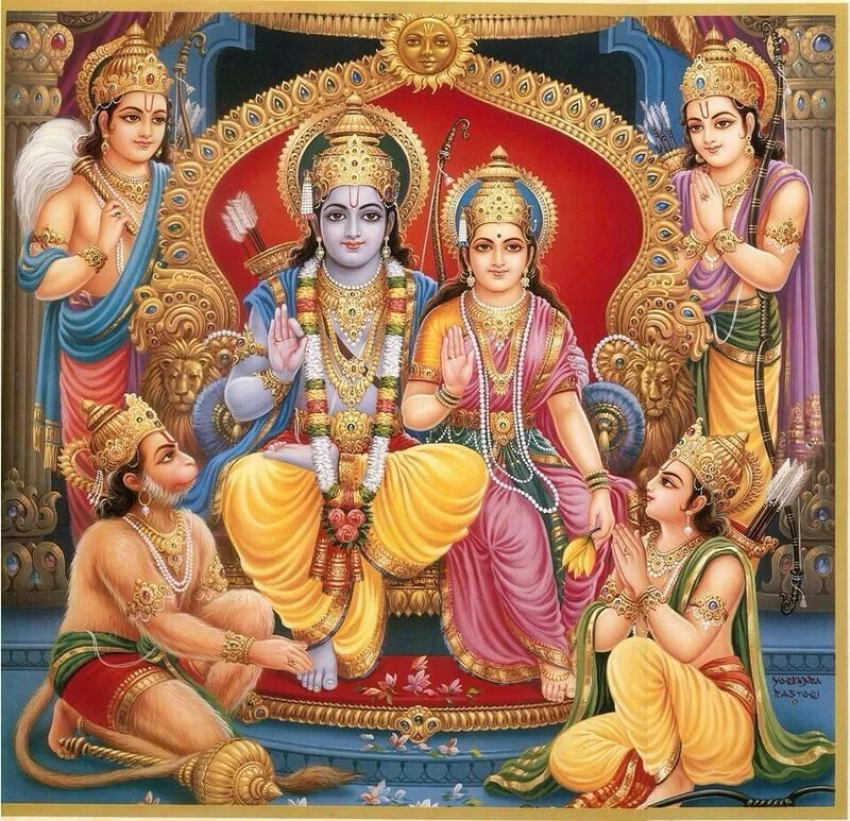In the heartland of Ayodhya, where the sacred river Sarayu gently flows, a monumental transformation is taking place—a spiritual metamorphosis that transcends time, politics, and belief systems. The Ram Mandir, standing tall on the hallowed grounds of Ayodhya, is not merely a structure of bricks and mortar; it is a testament to the resilience of faith, a symbol of unity, and the embodiment of centuries-old aspirations. At the core of this celestial marvel lies a ritual of profound significance known as “Pran Pratishtha,” where the divine breath is invoked into the idols, transforming them from lifeless sculptures to vessels of spirituality.
Historical Context:
To understand the profound essence of Pran Pratishtha, one must delve into the historical tapestry of Ayodhya. The city’s narrative is intricately woven with the epic of Ramayana, a saga that has endured across generations, transcending cultural boundaries. The Ram Mandir, envisioned as a tribute to Lord Ram, has weathered the storms of time, facing challenges that surpassed the realms of architecture and design.
The Journey to Pran Pratishtha:
The journey to Pran Pratishtha is a pilgrimage of the soul, intertwining faith, tradition, and devotion. Before delving into the ritual itself, it is imperative to recognize the meticulous craftsmanship and architectural brilliance that have gone into the creation of the Ram Mandir. The temple’s design, inspired by ancient Vedic principles, resonates with spiritual energy, beckoning devotees from far and wide.
The Sanctity of Pran Pratishtha:
Pran Pratishtha, often translated as “infusing life,” is the pivotal ceremony where the idols of deities are consecrated, marking the divine inhabitation within the sacred space. The ritual involves elaborate ceremonies, Vedic chants, and the meticulous adherence to prescribed rites. It is not merely a symbolic gesture; it is a transcendental moment where the earthly and divine realms converge.
Invocation of the Divine Breath:
At the heart of Pran Pratishtha lies the invocation of the divine breath, known as the “Prana.” This sacred breath, believed to be the life force that animates all existence, is channeled into the idols with profound reverence. The priests, adorned in traditional attire, act as conduits between the mortal and immortal, invoking the presence of the divine into the meticulously sculpted forms of Lord Ram, Sita, Lakshman, and Hanuman.
Symbolism in Every Gesture:
Every gesture, every mantra, and every ritual during Pran Pratishtha carries profound symbolism. The bathing of the idols symbolizes purification and sanctification, while the chanting of Vedic hymns resonates with cosmic vibrations, aligning the temple with the celestial order. The consecration is not merely a religious ceremony; it is a cosmic alignment that harmonizes the microcosm with the macrocosm.
The Ripple Effect of Pran Pratishtha:
The significance of Pran Pratishtha extends beyond the realms of religious fervor. It is a cultural phenomenon that reverberates through the annals of time, fostering a sense of unity and shared identity. The Ram Mandir, with its roots embedded in centuries of devotion, stands as a testament to the resilience of a community and the unwavering spirit of collective faith.
Impact on the Social Fabric:
The unveiling of the Ram Mandir and the completion of Pran Pratishtha have left an indelible mark on the social fabric of the nation. The temple has become a symbol of unity, fostering a sense of cultural pride that transcends religious affiliations. The pilgrimage to Ayodhya has transformed into a shared journey, where people from diverse backgrounds converge to witness the divine energy that permeates the sacred precincts.
Conclusion:
In the heart of Ayodhya, where history, faith, and culture converge, the Ram Mandir stands tall as a beacon of spiritual transcendence. The ritual of Pran Pratishtha, with its intricate ceremonies and profound symbolism, breathes life into the idols, elevating them from sculpted forms to vessels of divinity. Beyond the religious connotations, the temple symbolizes the resilience of a community, the triumph of coexistence, and the enduring power of collective faith. As the divine breath permeates the hallowed halls, the Ram Mandir becomes more than a place of worship; it becomes a sanctuary where the soul connects with the eternal.
By Akash Sharma (TGT English)




